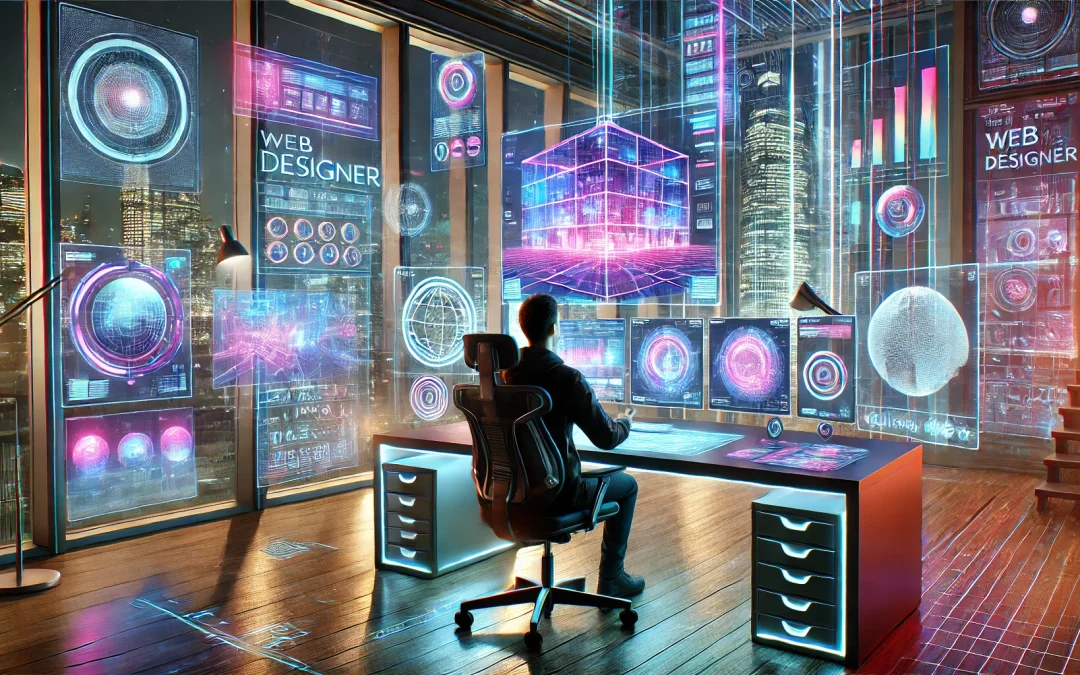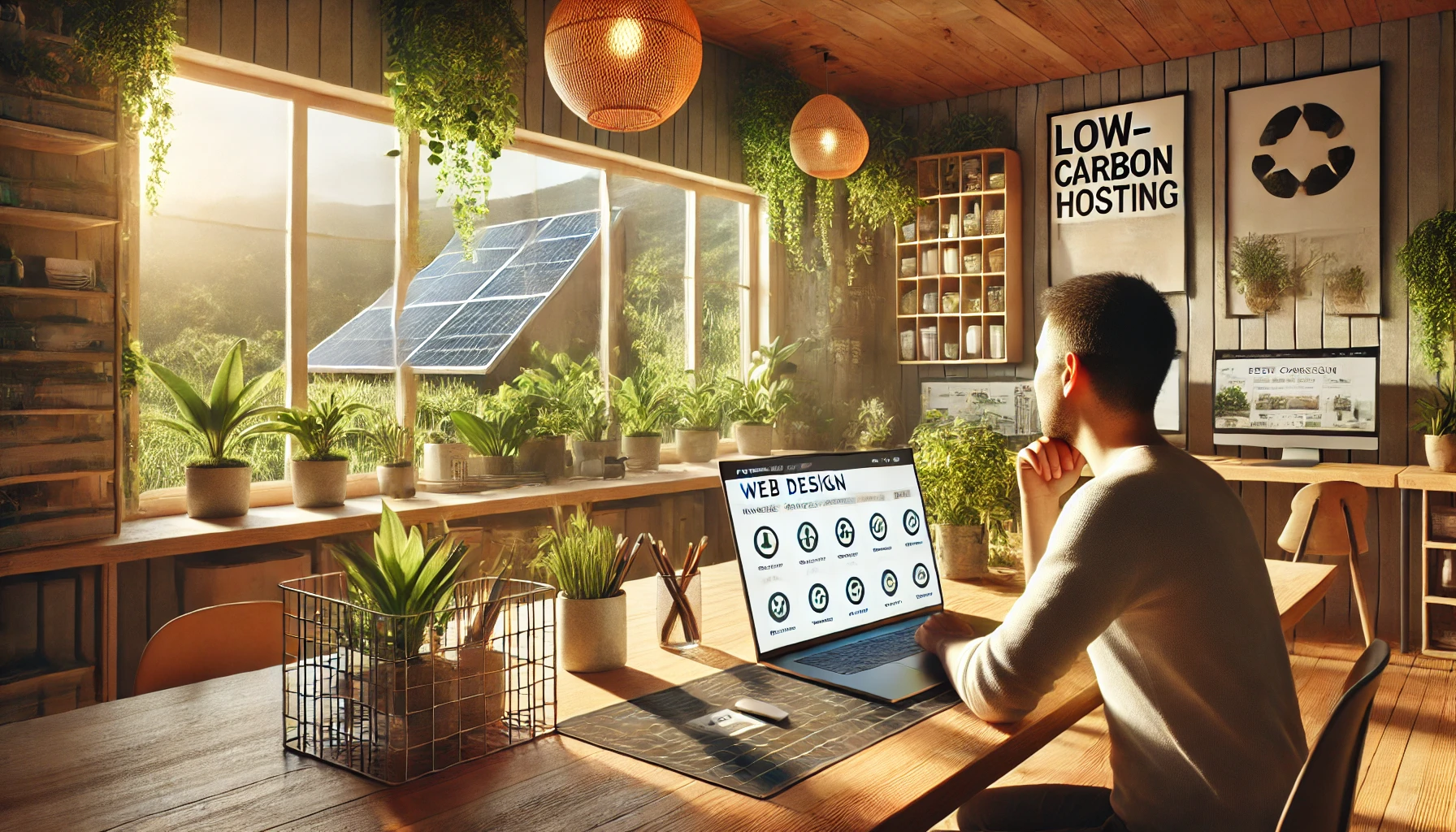
The digital world is evolving at an unprecedented pace, and web design is at the forefront of this revolution. As we step into 2025, businesses and developers are exploring innovative ways to enhance user experience, improve performance, and integrate advanced technologies seamlessly. This blog delves into the top web design trends that are shaping the digital landscape this year. Whether you're a seasoned designer or just starting, these insights will help you stay ahead of the curve.
1. AI-Driven Design
Artificial Intelligence (AI) continues to transform web design by automating complex tasks and enhancing creativity. In 2025, expect more tools leveraging AI to personalize user experiences based on behavior analytics, preferences, and real-time feedback. AI-powered chatbots and recommendation systems are becoming smarter, helping websites become interactive and intuitive.
Key Features:
-
Predictive content personalization
-
Dynamic UI adjustments
-
Voice user interfaces
2. Immersive 3D Elements
3D visuals have been popular for years, but they are now becoming more interactive and accessible thanks to WebGL advancements. 2025 will see a surge in 3D design implementations that engage users without compromising performance.
Examples:
-
Interactive maps and virtual tours
-
Gaming-inspired interfaces
3. Dark Mode and Dim Themes
Dark mode remains a favorite among users for its aesthetic appeal and reduced eye strain. In 2025, the trend evolves with more adaptive themes that adjust based on the time of day or ambient lighting.
Benefits:
-
Energy efficiency on OLED screens
-
Enhanced readability in low light
-
Sleek, modern appearance
4. Augmented Reality (AR) Integration
AR is breaking out of its niche, finding applications across industries like real estate, retail, and education. Websites are integrating AR to allow users to virtually "try" products or explore spaces, elevating the shopping and learning experiences.
Applications:
-
Virtual furniture placement tools
-
Interactive learning modules
-
AR-driven marketing campaigns
5. Minimalist and Clean Design
The "less is more" philosophy continues to dominate in 2025. Designers focus on clean layouts with ample white space, intuitive navigation, and minimal distractions, allowing content to shine.
Characteristics:
-
Focus on typography and high-quality imagery
-
Simplified navigation menus
-
Accessibility-centered design
6. Sustainable Web Design Trends
As environmental concerns grow, sustainable web design trends are becoming a priority. This includes optimizing code, reducing server loads, and creating energy-efficient designs.
Best Practices:
-
Use of green hosting services
-
Lightweight frameworks
-
Optimization for speed and reduced energy consumption
7. Motion UI and Microinteractions
Animation has moved beyond flashy effects to serve functional purposes. Microinteractions and subtle motion UI enhance user experience by providing feedback and making interfaces more engaging.
Use Cases:
-
Loading indicators
-
Button hover effects
-
Scroll-triggered animations
8. Voice Search Optimization
With the rise of smart speakers and voice assistants, optimizing websites for voice search is no longer optional. Websites are adapting their content and design to accommodate conversational queries.
Key Strategies:
-
Structured data and schema markup
-
Conversational content tone
-
Fast-loading pages
9. Advanced Accessibility Features
2025 prioritizes inclusivity in web design, incorporating tools and technologies to make websites accessible to everyone, including those with disabilities.
Enhancements:
-
AI-driven alt text generation
-
Keyboard and voice navigation support
-
WCAG 2.2 compliance
10. No-Code/Low-Code Platforms
These platforms are empowering non-technical users to build sophisticated websites. As tools become more robust, they enable rapid prototyping and deployment without compromising quality.
Benefits:
-
Faster development cycles
-
Cost-effective for small businesses
-
Democratization of web design
11. Cybersecurity-First Design
As cyber threats) become more sophisticated, web design trends are integrating advanced security measures to protect user data and maintain trust.
Implementations:
-
Biometric authentication
-
Multi-factor authentication (MFA)
-
HTTPS as standard
12. Enhanced Mobile-First Design
Mobile users outnumber desktop users, and this web design trend shows no signs of slowing. Mobile-first design ensures that websites are optimized for smaller screens without sacrificing functionality.
Focus Areas:
-
Responsive layouts
-
Touch-friendly interfaces
-
Faster loading speeds
Conclusion
The future of web design is dynamic, innovative, and user-centric. From AI-driven customization to sustainable practices, 2025's trends are paving the way for a more inclusive and engaging digital world. Embracing these trends will not only improve user experience but also help businesses stay competitive in a rapidly evolving market.
Are you ready to implement these trends into your next project? Contact us to stay ahead and make your website a masterpiece of modern design.
Table of Contents
📧 Stay Updated
Get the latest web development tips and insights delivered to your inbox.




